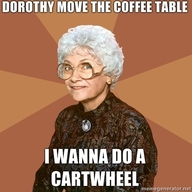 Happy Monday, everyone. Last week, I wrote about annoying things that funders say to us nonprofits. Now, I want to stress again that funders and fundees are in symbiotic relationship. Like those ants that live on that one tree. Or those billions of probiotic bacteria that thrive in a healthy stomach. Nonprofits cannot do our work without funding, and funders can’t do their work without nonprofits. And no one can do their work without a healthy stomach, which is why all of us—funders and NPOs—should eat more yogurt and kimchi.
Happy Monday, everyone. Last week, I wrote about annoying things that funders say to us nonprofits. Now, I want to stress again that funders and fundees are in symbiotic relationship. Like those ants that live on that one tree. Or those billions of probiotic bacteria that thrive in a healthy stomach. Nonprofits cannot do our work without funding, and funders can’t do their work without nonprofits. And no one can do their work without a healthy stomach, which is why all of us—funders and NPOs—should eat more yogurt and kimchi.
Anyway, after last week’s post, I got emails from a few funders who wanted to point out that nonprofits say and do annoying things also. At this point, you may have spewed coffee at your computer screen in shock and indignation. We nonprofits are unicorns! We never do anything annoying! Well, here are some things I was asked to mention. Let’s hear our funding friends out. And let’s keep in mind that I am only the messenger here. Like Shakira in those Activia probiotic yogurt commercials, but maybe slightly less attractive.Continue reading →





